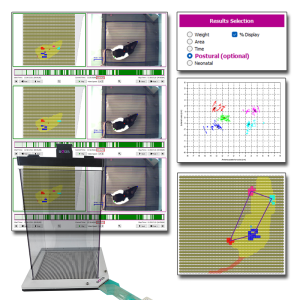Authors
Diggle CP, Sukoff Rizzo SJ, Popiolek M, Hinttala R, Schülke JP et al.
Lab
School of Medicine, University of Leeds, Leeds LS9 7TF, UK.
Journal
Am J Hum Genet.
Abstract
Deficits in the basal ganglia pathways modulating cortical motor activity underlie both Parkinson disease (PD) and Huntington disease (HD). Phosphodiesterase 10A (PDE10A) is enriched in the striatum, and animal data suggest that it is a key regulator of this circuitry. Here, we report on germline PDE10A mutations in eight individuals from two families affected by a hyperkinetic movement disorder due to homozygous mutations c.320A>G (p.Tyr107Cys) and c.346G>C (p.Ala116Pro). Both mutations lead to a reduction in PDE10A levels in recombinant cellular systems, and critically, positron-emission-tomography (PET) studies with a specific PDE10A ligand confirmed that the p.Tyr107Cys variant also reduced striatal PDE10A levels in one of the affected individuals. A knock-in mouse model carrying the homologous p.Tyr97Cys variant had decreased striatal PDE10A and also displayed motor abnormalities. Striatal preparations from this animal had an impaired capacity to degrade cyclic adenosine monophosphate (cAMP) and a blunted pharmacological response to PDE10A inhibitors. These observations highlight the critical role of PDE10A in motor control across species.
BIOSEB Instruments Used
Dynamic Weight Bearing 2.0 (BIO-DWB-DUAL)
Source :

 Douleur - Allodynie/Hyperalgésie Thermique
Douleur - Allodynie/Hyperalgésie Thermique Douleur - Spontanée - Déficit de Posture
Douleur - Spontanée - Déficit de Posture Douleur - Allodynie/Hyperalgésie Mécanique
Douleur - Allodynie/Hyperalgésie Mécanique Apprentissage/Mémoire - Attention - Addiction
Apprentissage/Mémoire - Attention - Addiction Physiologie & Recherche Respiratoire
Physiologie & Recherche Respiratoire




































 Douleur
Douleur Système Nerveux Central (SNC)
Système Nerveux Central (SNC)  Neurodégénérescence
Neurodégénérescence Système sensoriel
Système sensoriel Système moteur
Système moteur Troubles de l'humeur
Troubles de l'humeur Autres pathologies
Autres pathologies Système musculaire
Système musculaire Articulations
Articulations Métabolisme
Métabolisme Thématiques transversales
Thématiques transversales Congrès & Meetings
Congrès & Meetings 
